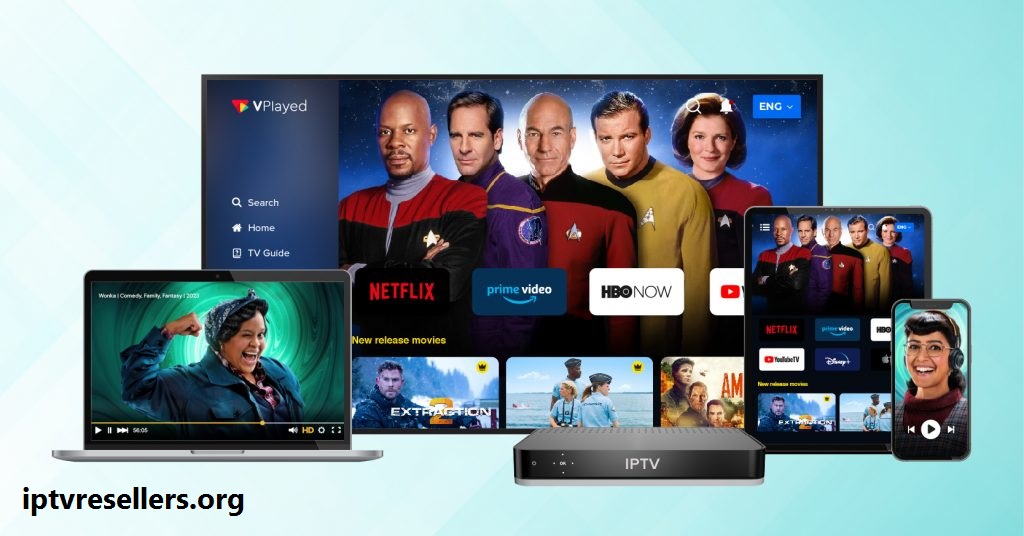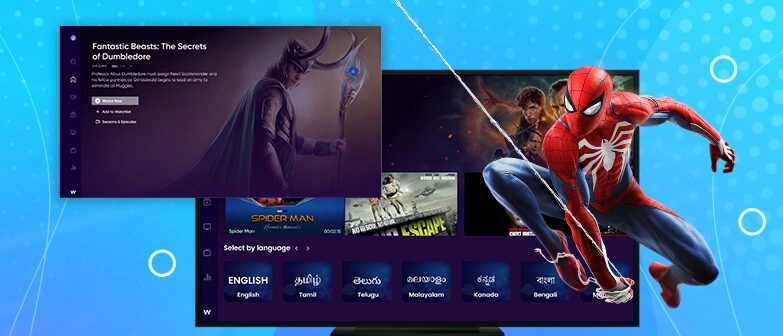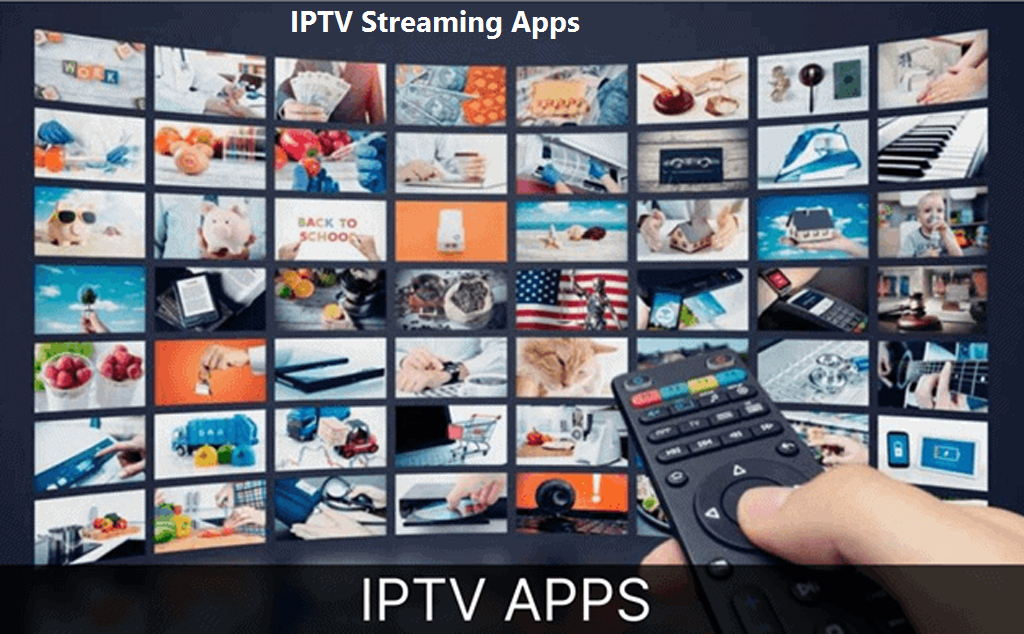
The Ultimate Guide to the Best Free IPTV Server Software in 2024
Imagine having the power to curate your own television channel. A place where you can stream your favorite movies, share family videos, broadcast a local event, or even create a 24/7 channel dedicated to your passion—be it vintage cartoons, indie music, or cooking tutorials. This isn’t a fantasy reserved for media conglomerates; it’s a reality you can build from your living room.
The engine behind this revolution? IPTV server software. This is the magic that takes your video content and turns it into a broadcastable stream that anyone, anywhere, can tune into with a simple link.
But with so many options, and a minefield of technical jargon, where do you even begin? Especially if you’re on a budget? Right here. This guide is your friendly, no-nonsense roadmap to the world of free IPTV server software. We’ll cut through the complexity, compare the top contenders, and give you the confidence to start your broadcasting journey. Let’s find your perfect platform.
What Is IPTV Server Software? The Engine Behind the Stream
Let’s break it down simply. IPTV Server Software is a specialized program that runs on a computer (your server). Its job is to:
-
Ingest: Take in video content from various sources (live feeds from a camera, video files from a folder, or even other online streams).
-
Encode: Convert that video into a digital format suitable for streaming over the internet.
-
Organize: Create electronic program guides (EPG) so viewers know what’s on and when.
-
Distribute: Push the stream out to your audience in a standard format (like HLS or MPEG-DASH) that apps on phones, smart TVs, and computers can understand.
Think of it as your own personal TV station’s control room and transmission tower, all rolled into one software package.
Why Consider Free IPTV Server Software?
You might be wondering, “Why go free when there are paid options?” The reasons are powerful:
-
Zero Cost Experimentation: Before you invest a single dollar in premium software, you can learn the fundamentals, understand the workflow, and see if managing a server is even something you enjoy.
-
Powerful Features for Nothing: The free and open-source community has produced incredibly robust software. Many free options offer features that rival or even surpass expensive enterprise solutions.
-
Total Control and Customization: Open-source software means you can see the code, modify it, and tailor the server to your very specific needs. You are not locked into a vendor’s vision.
-
Ideal for Personal & Niche Use: Perfect for hosting a stream for your family, a private community, a hobby project, or testing a business idea without upfront costs.
Critical Features to Look For in Free Server Software
Not all free software is created equal. When evaluating your options, keep an eye out for these essential features:
-
Supported Output Formats: The software must output HLS (HTTP Live Streaming). This is the universal standard that works on nearly every device today. Support for MPEG-DASH is a big plus.
-
Electronic Program Guide (EPG) Support: Can it generate and manage an EPG? A TV service feels incomplete without a schedule for your viewers.
-
Input Flexibility: What can it accept as a source? Look for support for various inputs: live capture from capture cards, files (.mp4, .mkv), other streams (URLs), and even screen capture.
-
User Management & Security: Can you create user accounts? Set passwords? Restrict access? This is vital for keeping your private stream private.
-
Recording / Timeshifting: The ability to record live streams to your server for later playback is a hugely valuable feature.
-
Active Community & Documentation: For free software, a helpful community forum and good documentation are worth their weight in gold when you run into trouble.
Top Contenders: Best Free IPTV Server Software
Here’s a breakdown of the most powerful and popular free options available today.
| Feature | XUI.ONE | Streamur | RMS – Remote Media Server | ErsatTV |
|---|---|---|---|---|
| Core Strength | User-Friendly Web Interface | All-in-One Windows App | Powerful Automation & API | Lightweight Simplicity |
| Best For | Beginners, Quick Setup | Windows Users, All-in-One Solution | Tech Enthusiasts, Developers | Old Hardware, Basic Streams |
| Web Interface | Yes (Excellent) | No (Desktop GUI) | Yes | No |
| EPG Support | Yes | Yes | Yes | Limited |
| Recording | Yes | Yes | Yes | No |
| Key Advantage | Easiest to use, feels professional | Simple install, no extra config needed | Incredibly powerful scripting & API | Extremely low resource usage |
| Potential Drawback | Free version is limited | Windows-only, less scalable | Steeper learning curve | Fewer features |
Deep Dive on the Software
1. XUI.ONE
XUI.ONE is often the top recommendation for a reason. It provides a fully-fledged, professional-grade web interface that makes managing your IPTV server surprisingly simple. Adding streams, organizing them into categories, creating user logins, and setting up an EPG is all done through a clean, intuitive browser-based dashboard. It feels like a paid panel, and its free version is more than capable for personal use and small-scale broadcasting. It’s the perfect starting point for most newcomers.
2. Streamur
If you’re a Windows user who wants to avoid complex command lines and installing multiple components, Streamur is your best friend. It’s a standalone desktop application that bundles everything you need—the server, the front-end, and the tools—into one neat package. You can add streams, manage your playlist, and get broadcasting in minutes. Its simplicity is its greatest strength, making it ideal for quickly turning a PC into a broadcasting server.
3. RMS (Remote Media Server)
For the tinkerer, the developer, or the person who needs ultimate control, RMS is a powerhouse. Its core strength lies in its powerful API and automation capabilities. You can write scripts to dynamically add or remove channels, automate recordings based on schedules, and integrate it with other software. It has a web interface and is very feature-rich, but it has a steeper learning curve. If you want to build something highly customized, RMS is the way to go.
4. ErsatTV
Don’t have a powerful machine? ErsatTV is renowned for being incredibly lightweight and efficient. It can run on a Raspberry Pi or an old laptop without breaking a sweat. It’s a command-line tool that is fantastic for doing one thing very well: taking a source (like a capture card) and turning it into an HLS stream with minimal latency. It’s less about management features and more about raw, efficient streaming.
How to Choose the Right Software for You
Your choice depends entirely on your goals and technical comfort level. Ask yourself these questions:
-
What is my technical skill level?
-
Beginner: Choose XUI.ONE or Streamur.
-
Advanced/Developer: Choose RMS.
-
-
What hardware will I use?
-
Old PC / Raspberry Pi: ErsatTV or a minimal install of XUI.ONE.
-
Modern Windows PC: Streamur is a great fit.
-
Linux Server: XUI.ONE or RMS.
-
-
What is my primary goal?
-
Simple family stream: Streamur or XUI.ONE.
-
A complex, automated TV station: RMS.
-
Low-latency live feed from a camera: ErsatTV.
-
Getting Started: Your First Broadcast in 4 Steps
The exact steps vary by software, but the general workflow is universal:
-
Set Up Your Server: Choose a computer that will be on and connected to the internet 24/7. Install your chosen software (e.g., download Streamur, or follow the install instructions for XUI.ONE).
-
Add Your Content: In your software’s dashboard, add a “stream source.” This could be the path to a video file (e.g.,
/home/videos/movie.mp4), a URL from another stream, or a connected capture device. -
Configure Your Output: The software will automatically start encoding this source into HLS. It will generate a “playlist” URL (usually an
.m3ufile). -
Share and Watch: Give this playlist URL to your viewers. They can input it into any standard IPTV player app like VLC, Tivimate, or IPTV Smarters to start watching your broadcast.
Important Legal and Safety Considerations
This is non-negotiable. Your responsibility as a broadcaster is immense.
-
Copyright is Key: You ONLY have the right to stream content that you own the rights to or that is in the public domain. Streaming copyrighted movies, TV shows, or live pay-per-view events without a license is illegal. Use your server for your own content, home videos, or freely available public domain material.
-
Keep it Private: If you are streaming personal content, use the user management and password protection features in your software. Do not make your stream publicly accessible unless you are certain of the legal implications.
-
Server Security: Ensure your server’s operating system and software are always up to date with security patches to prevent unauthorized access.
Beyond the Free Tier: When to Consider Upgrading
Free software is amazing, but if your project grows, you might hit limitations. Here’s when to consider paid software or donating to the project:
-
You Need More Performance: Paid software might offer better transcoding efficiency.
-
You Require Official Support: Having a company to call for help is critical for business use.
-
Your Project Scales: If you go from 10 users to 10,000, enterprise-grade software becomes necessary.
-
You Want to Support Development: If a free tool has been invaluable to you, consider donating to the developers to ensure it stays alive and gets better.
Conclusion: Your Broadcast Awaits
The barrier to entry for becoming a broadcaster has never been lower. Thanks to powerful, dedicated, and free IPTV server software like XUI.ONE, Streamur, and RMS, anyone with a computer and an idea can create their own television experience.
The journey starts with choosing the right tool for your vision. Whether you’re building a private family cinema, a community news channel, or a testing ground for the next big streaming idea, there’s a free platform ready for you to take the controls. So dive in, experiment, and start streaming.
Frequently Asked Questions (FAQ)
Q: Is this legal? Can I watch free movies with this?
A: The software itself is 100% legal. What makes it legal or illegal is the content you stream through it. You must only broadcast content you have the rights to. Using these tools to stream copyrighted material you don’t own is piracy and is illegal.
Q: Do I need a powerful computer to run an IPTV server?
A: It depends. If you are just streaming existing video files without converting them (direct play), even a Raspberry Pi can work. If you need to live-encode a video stream into a different format (transcoding), you will need a more powerful CPU or a GPU that supports hardware encoding.
Q: What is the difference between IPTV server software and a media server like Plex/Jellyfin?
A: Plex and Jellyfin are fantastic for on-demand video libraries (like your personal Netflix). IPTV server software is designed for live, linear broadcasting. It creates channels that play content in a scheduled sequence, just like traditional TV, and supports live source inputs.
Q: Can I make money with free IPTV server software?
A: You could potentially use it as the backbone for a legitimate business (e.g., a niche subscription service for your own content). However, the software itself won’t handle payments or marketing. You would need to build that infrastructure around it. You cannot legally make money from broadcasting copyrighted content.
Q: My stream is buffering for viewers. How do I fix this?
A: Buffering is usually a bandwidth issue. Check:
-
Your server’s upload internet speed (use Speedtest.net).
-
The bitrate of your video stream; don’t set it higher than your upload can handle.
-
The geographic location of your viewers; using a CDN can help, but that is an advanced and typically paid service.




